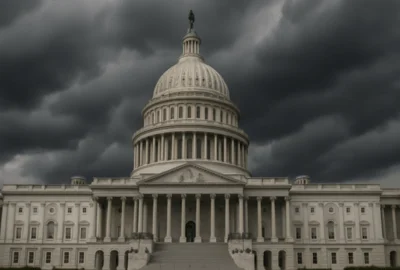It’s time to celebrate the hardworking and often unappreciated creatures known as pollinators by raising awareness about them. Pollinators consist of birds, butterflies, bats, wasps, small mammals, and the essential bees, to name a few. Because of pollinators, we have nutrients in our bodies, fresh air to breathe, and a healthy ecosystem. Did you know that one out of three bites of food we eat exists because of pollinators?
Bees are considered the most significant pollinators as they pollinate $15 billion worth of crops each year and contribute most vastly to human health. In order to produce honey which is helpful to its hive, the bee goes from flower to flower moving pollen from anther to the stigma of a flower. As a result of its honey making efforts, pollination occurs and the output of the process is seeds, fruits, and the reproduction of the plant.
So we celebrate these hard workers because they help the ecosystem by assisting plants in doing what they cannot do alone.
Also, the honey that bees produce is commonly used in traditional medicine because of its antioxidant, antimicrobial, anti-inflammatory, and anticancer properties. The honey ingredient can treat various conditions, including bronchial asthma, hepatitis, tuberculosis, hemorrhoids, and eczema. In a 2020 study, scientists found evidence that melittin, a component in honeybee venom, could kill cancer cells.
But as you know pollinators are in trouble. Many are seeing decreasing populations because of habitat loss, disease, parasites, and pesticide use. But the good news is there are simple ways you can help. It can be as easy as selecting high- quality pollinator plants for your garden.
In honor of Pollinator Week this year, I traveled to Fayette, Mississippi, to the Scroggins Farm. The Scroggins Farm was founded in 2016 by Mitch Scroggins and his late father, Nelson Scroggins. The farm is estimated to be around 700 acres and serves as a recreational family farm.
Mitch grew up being an outdoorsman. Being a first-time landowner and a beginning farmer, owning his own "playground" felt like a dream come true. He had no idea what it would be like to run his farm. He began reading, studying, and watching all the land/habitat material, thereby adding knowledge to what he already knew. A family member mentioned to Mitch about the Natural Resources Conservation Service (NRCS) and some of the programs they offer.
Mitch immediately became interested in the Conservation Stewardship Program (CSP) that NRCS offers. After hearing about the programs, he scheduled a meeting at his local NRCS field office in Jefferson County. Mitch met with then Soil Conservationist Napoleon O’Quinn, who spent half a day touring the Scoggins farm. Napoleon developed a conservation plan to assist Mitch in meeting his goals.
Mitch applied for assistance through CSP and the Environmental Quality Incentives Program (EQIP). He was approved for both programs and received funding. The programs enabled the many improvements he could make to his farm and its habitat.
"NRCS wants to provide as many resources as possible to all the landowners in the county. The truth is, many of our landowners aren't aware of our programs or the resources we provide. During my meeting with Mr. Scroggins, I was able to give him information about our programs and the technical benefits NRCS can provide. Mr. Scroggins has an interest in bees and butterflies, wanting to improve the habitat for each. This helped us develop a conservation plan to plant pollinator species around field borders on his property." –Napoleon O'Quinn.
As a result of CSP, he included Forest Stand Improvements, Snag and Den Tree Management, and Onsite Carbon Storage on his farm. These practices helped his forest from the bottom to the top; for example, leaving den trees and snags promotes bat productivity. Because of this practice, his bat population has responded immediately with an increase. Bats also help keep insects away, "You do not know how nice it is to go out and not be carried off by biting insects. You help the bats; they help you," said Mitch.
Forest Stand Improvement is a practice that Mitch dearly loves. He loves taking a section of the woods and reducing the number of undesirable tree species. Eliminating unwanted trees can help tree-dwelling species. This management practice helps promote better hardwood canopies allowing more sunlight to penetrate the coverings. When the sunlight gets to the oaks, it dramatically increases acorn production. Then, the acorns feed most of the forest-dwelling animals and birds.
The farm also has 24 acres of clover, which bees are attracted to because of its tremendous nectar source. Clovers are considered low maintenance, offering a fresh aroma and food to the bee population. In addition, Mitch is working on a monarch butterfly habitat and plans to complete it this September.
Mitch states, "None of this would be possible if it were not for the NRCS program. The program has helped me start a process that would probably last my lifetime. Hopefully, I can pass this down to my family and keep the farm going in the right direction."
If you operate a farm or ranch, NRCS can help you create habitat for pollinators. This not only benefit pollinators, but also provides ample perks for the farmers and ranchers, too. More pollinators can increase crop yields. Pollinators can be increased by planting wildlife flowers in and around fields and choosing the right cover crops. NRCS offers more than three dozen conservation practices that assist in building healthier landscapes for pollinators. NRCS can help fund the implementation of these practices.
For more information on NRCS conservation programs, visit your local USDA Service Center or www.nrcs.usda.gov.
Original source can be found here.







